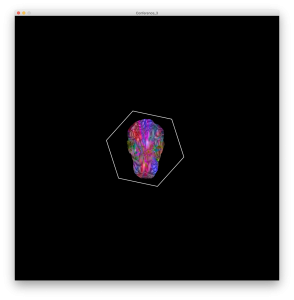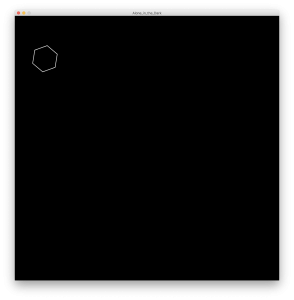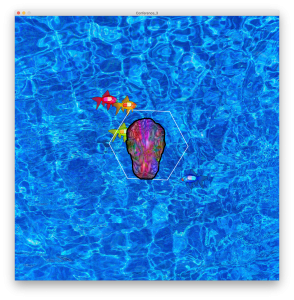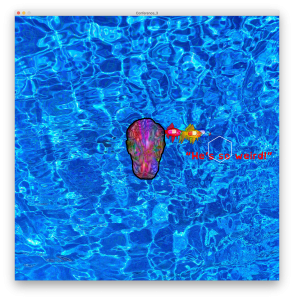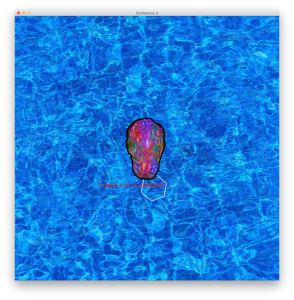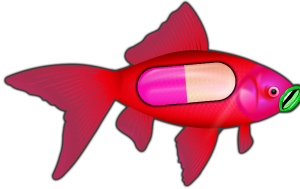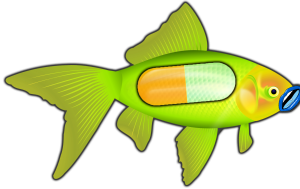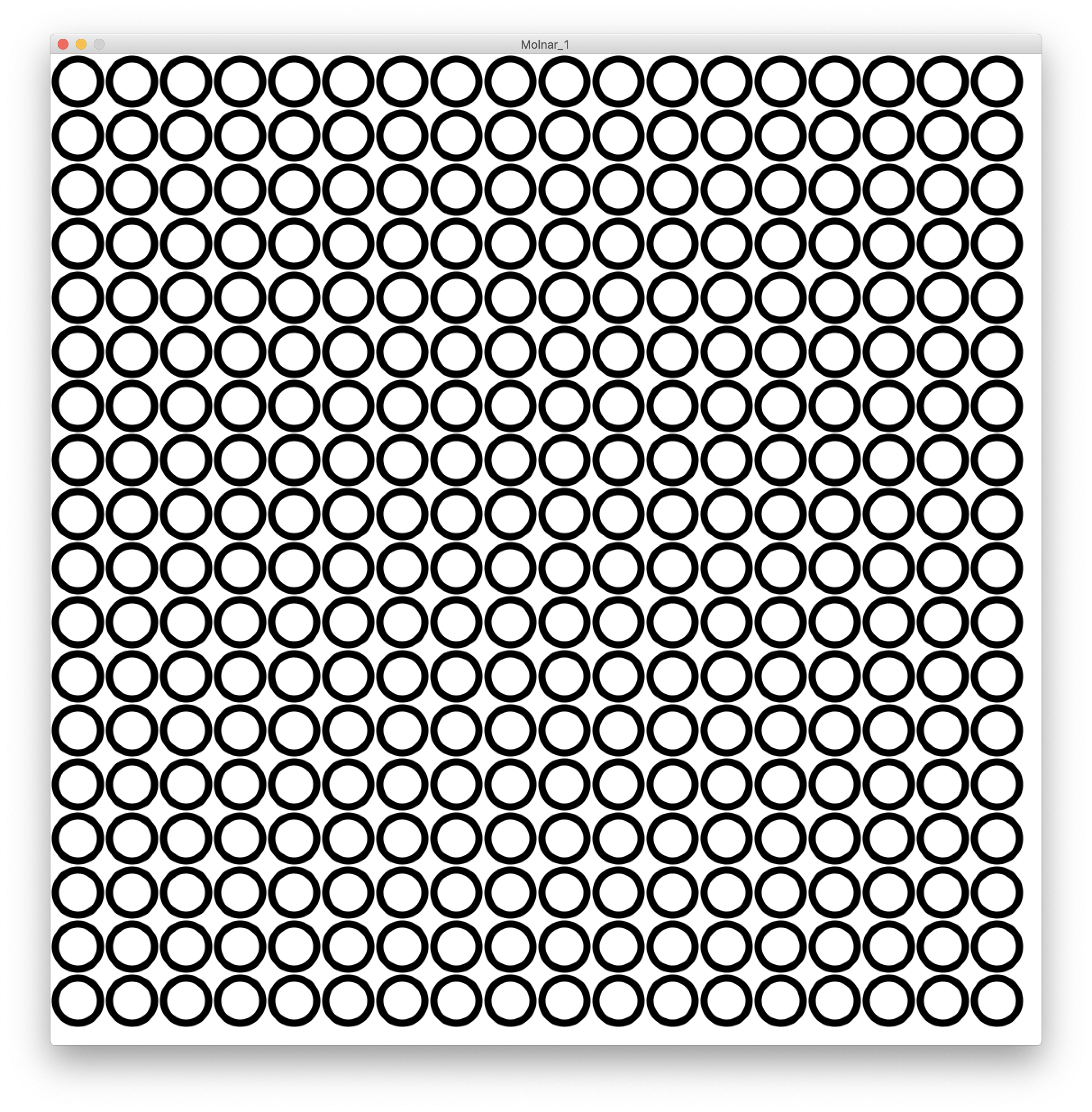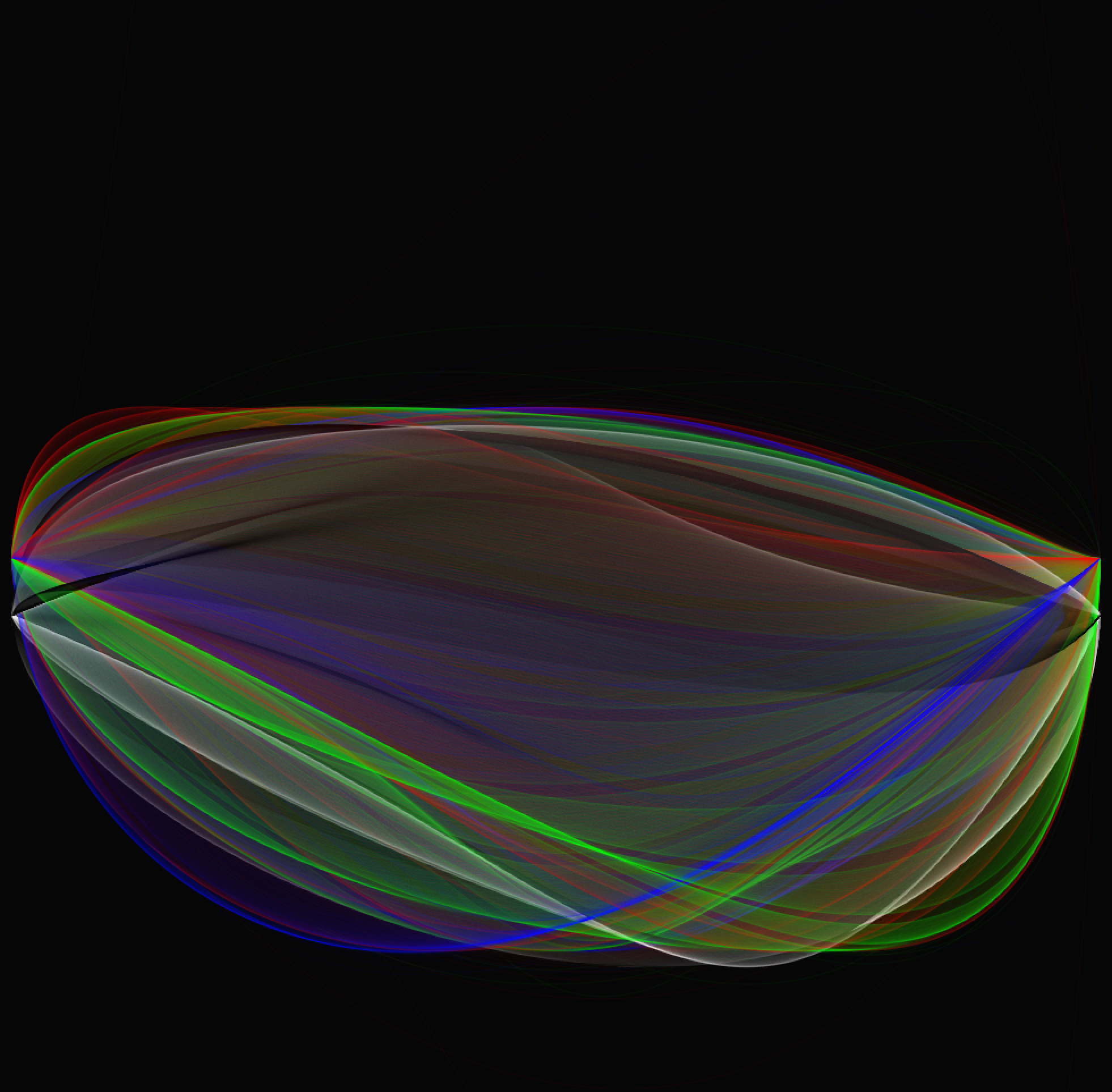Vera Molnar used precise controls and exact measurements to create a sequence of images each with a single changing element. Georg Nees used stochastic procedures and generative functions to create unique shapes which could easily be altered, changed, and or repeated. Grace C. Hertlein borrowed many of Nees’s ideas, and took them a step further. She added elements of randomness which gave the computer more control, allowing for more organic, fluid, and softer visual styles. She preferred the more playful, experimental pieces. For Hertlein, it was never about control over every detail, or perfection, it was about creativity, experimenting and the art.
Taking inspiration from Molnar’s use of gradualism, Nees’s use of formalism, and Hertlein’s randomness, Alone in the Dark is an interactive piece having to do with BiPolar disorder. When first opened, the piece will be a black screen with only one spinning white hexagon visible. The hexagon was created using Nees’s technique. The number of sides, the radius, speed, and other values can easily be changed without having to recreate the whole shape.
Similar to Heirtlein’s lust for organic creativity and uncertain exploration, this art piece requires a combination of human and machine control. The piece depends on its audience to act in certain ways, perform certain functions, but everyone can go about it differently. It will always turn out differently, the user and the computer are working together. The experience requires interactivity.
While interacting with the work, the first thing the audience will notice is how the white hexagon is tracking the mouse. The next thing one will experience appears after the mouse enters a set area. The hexagon will grow in size, and an image will appear.
Next, after one interacts with the lone face in the vast black canvas, the darkness will disappear and reveal the mind in surrounded by an ocean with four fish swimming. If looked at closer, the four different colored fish each contains a pill. The fish will follow the white hexagon around everywhere, but the white hexagon can also push them away.
When moving the mouse about the piece, whether to run away from the fish, to push away the fish, or possibly just exploring the canvas, phrases may begin to appear. Hidden around the canvas are fifteen quotes, all bright red, but only visible when under the mouse.
Finally, when the viewer has nothing left to see or no time left to witness, they can once more interact with that lonely face, and darkness will again wash over the ocean.
When first beginning this piece, the plan was very different from the outcome. As work continued, certain ideas became impractical, new better ideas replaced the originals, and eventually, Alone in the Dark became a complete work. Created mostly with images and shapes, this piece includes 28 different images and 7 shapes. Every individual item in the screen, is its own object. This piece includes a total of 30 objects some of which include each of the fish, the face in the center, the hexagon, the black layer, the ocean, even each individual phrase is its own object.
All but one of the images were created specifically for this piece. The face in the center is actually a picture of my face, on top of which I added bright, chaotic colors and lines meant to represent brain function. The fish are all carrying a different colored pill, and each required two images, one facing right, and the other left.
They all spawn at different locations on the canvas, and all move at a different speed. They are always following the mouse, trying to stay on the edge of the hexagon. They can never enter the hexagon unless the mouse is moving towards the fish, an action which push the fish away. However, since the mouse can be moved much faster than the fish can move, the hexagon can pass through the fish. The only image created prior to this project is the water background, but that image required a vertically flipped duplicate in order to achieve the rippling effect.
This piece is an attempt to create a visual representation of what goes on in the mind of a child suffering from mental illness. At a young age I was diagnosed with bipolar disorder, and this work includes a lot of my own thoughts and feelings. The instruction-less nature of the interactive art is supposed to mimic the feeling of confusion and losing oneself in their own mind. Everything is hidden and needs to be searched for, but depending on where one looks, what they find could greatly differ. That is meant to portray the instantaneous, uncontrollable switching from one emotion to the next, not knowing which feeling will appear next. The quotes are also all things I have either said or heard myself.
Ultimately, Alone in the Dark is meant to be a reminder to every individual suffering from mental illness, you are not alone, a commending of societies’ ever increasing acknowledgement of the existence of mental illness, it is both a curse and a gift, and a tribute to the constantly evolving medium of computer artwork, you have created a new way for people to express themselves and create.
